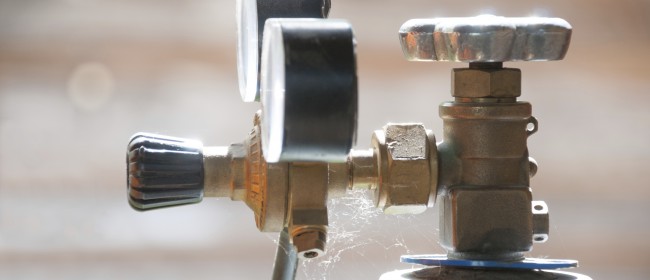Editors Note: In an effort to provide the best employee benefits solutions to our clients, their employees, and their employees’ families in the automotive, roads, and fuels industry, the following is another installment in our ongoing series of educational bulletins designed to inform and protect our audience. Each segment of this series been taken from the archives of NARFA’s Automotive Industries Compensation Corporation (AICC) program and is designed to help inform, prepare, and protect businesses and their people from the everyday hazards within their workplace and beyond.
Workplace Safety Tips for Working with Compressed Air Systems
Failure to properly use a compressed air system in the workplace can create some serious company safety hazards—particularly to employees who work in the automotive industry. There are, however, some safety precautions every employee can follow to eliminate these workplace hazards.
Equipment in poor condition, including safety devices and controls, present a potential for serious explosions to occur, and in most cases will not be certified for operation during state authorized inspections. Before getting to these safety precautions, it’s important to know the many components of a compress air system—air compressor, air tank(s), air hoses, gages, and valves—and how to maintain them, operate them, and follow safety best practices.
How to Safely Maintain Compressed Air System Components
Below are safety precautions for each component of a compressed air system that should be taken care of to safely maintain the equipment:
Air ReceiversThe only time air receivers should exceed maximum allowable working pressure is during testing. Workplace safety tips include:
- The intake and exhaust pipes of small tanks, similar to those used in garages, should be made removable for interior inspections.
- No tank or receiver should be altered or modified by unauthorized persons.
- Receivers should be drained frequently to prevent accumulation of liquid inside the unit. *Receivers having automatic drain systems are exempt from this requirement.
- Air tanks should be located so that the entire outside surfaces can be easily inspected. Air tanks should not be buried or placed where they cannot be seen for frequent inspection.
- A safety (spring loaded) release valve shall be installed to prevent the receiver from exceeding the maximum allowable working pressure.
- Only qualified personnel should be permitted to repair air tanks, and all work must be done according to established safety standards.
Air Distribution Lines Air distribution lines should always be made of high quality materials, fitted with secure connections. Workplace safety tips include:
- Only standard fittings should be used on all air lines.
- Avoid bending or kinking air hoses.
- Do not place air hoses where they can create tripping hazards.
- Always check hoses to make sure they are properly connected to pipe outlets before use.
- Inspect air lines frequently for defects.
- Replace/repair any defective equipment immediately.
- Compressed air lines should be identified as to maximum working pressures (psi), by tagging or marking pipeline outlets.
Pressure Regulation Devices Only qualified personnel should be allowed to repair or adjust pressure-regulating equipment. Workplace safety tips include:
- Gauges and other regulating devices should be installed on compressor equipment in such a way that they cannot be made inoperative.
- Air tank safety valves should never be set higher than the maximum allowable working pressure of the air receiver.
- Blow off valves should be located on the equipment and shielded so sudden blow offs will not cause personnel injuries or equipment damage.
- If the design of a safety or a relief valve is such that liquid can collect on the discharge side of the disk, the valve should be equipped with a drain at the lowest point where liquid can collect.
- Safety valves exposed to freezing temperatures should be located so water cannot collect in the valves. Frozen valves must be thawed and drained before operating the compressor.
How to Operating a Compressed Air System Safely
When it comes to actually operating a compressed air system, employees should demonstrate a certain level of care and caution. Only authorized and trained personnel should operate air compressor equipment, and air intake should always be from a clean, outside, fresh air source. Workplace safety tips include:
- Never operate air compressors at speeds faster than the manufacturers’ recommendation.
- Equipment should not become overheated.
- Moving parts, such as compressor flywheels, pulleys, and belts that could be hazardous should be effectively guarded.
General Air Compressor System Maintenance Best Practices, Non-Component Specific
While it should be clear that compressed air systems require a high level of care, here are some additional, non-component or operational related maintenance musts:
- Only authorized and trained personnel should service and maintain air compressor equipment.
- All exposed, and non-current carrying metal parts of compressor should be effectively grounded.
- Do not use low flash point lubricants on compressors because of its high operating temperatures that could cause a fire or explosion.
- Never over lubricate your equipment.
- Do not use gasoline or diesel fuel powered compressors indoors.
- Direct exhausts of all equipment placed outside but near buildings away from doors, windows and fresh air intakes.
- Do not use kerosene or other flammable substances to clean your equipment.
- Frequent cleaning is necessary to keep compressors in good working condition.
- Completely purge all air systems immediately after each cleaning.
- All switches of electrically operated compressors should be locked open and tagged to prevent accidental starting.
At NARFA, we strongly believe that implementing these workplace safety rules can help you eliminate safety hazards and protect your employees as they work. Contact us to learn more about what other benefits administration services and employee benefit solutions we offer for automotive, roads, and fuel associations, or to hear more about the culture of company safety that we cultivate as part of our AICC worker’s compensation coverage program. And don’t forget to stay connected with our Health & Wellness Safety Tips—we’re always adding more tips to help you and your employees create workplace safety. (All tips included in this post come with courtesies extended to AmTrust Financial)
Recent Posts
IRS Guidance on Nutrition, Wellness, and General Health Expenses
The Internal Revenue Service (IRS) has recently highlighted that costs associated with nutrition, wellness, and general health do not typically qualify as reimbursable medical expenses [...]
HSAs Today and Every Day: A Triple Threat Against Rising Healthcare Costs
The healthcare landscape is constantly evolving, and in 2024, rising costs remain a top concern for both employers and employees. Fortunately, Health Savings Accounts (HSAs) [...]
April Showers Don’t Cause Accidents (Distracted Driving Does): Stay Safe on the Road This Month (and Every Month)
Spring is here, and with it comes April's designation as Distracted Driving Awareness Month. While the changing seasons and blooming flowers might tempt you to [...]




